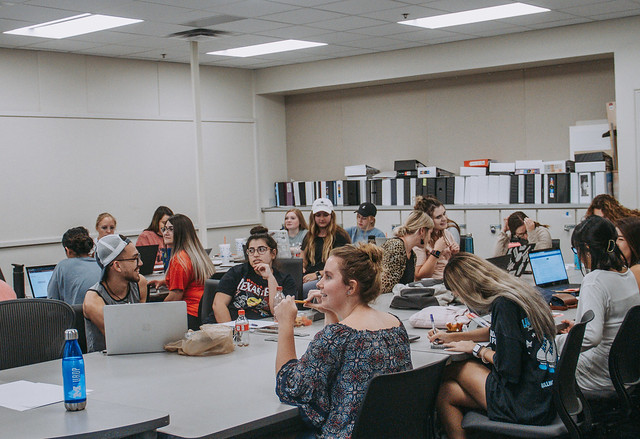DOD Collaboration Studio Project: ID 4606
Designing for Dementia Care: Application of Educational Philosophy

Faculty in the Department of Design at Texas Tech University are collaborating with Dekker/Perich/Sabatini (D/P/S) design firm in Albuquerque, New Mexico in the Interior Design (ID) 4604 collaboration studio course. When Department Chairperson and Professor Sharran Parkinson, Ph.D. initially met with the firm, they expressed an interest in engaging with students in the studio environment.
D/P/S operates as one multidisciplinary firm providing architecture, landscape architecture, interior design, and structural engineering services. The firm serves clients in Texas and surrounding states as well as some work throughout the country.
Assistant Professor Erin Hamilton, Ph.D. explained that the department needed a new partner for the collaboration studio course. In years past, the department has partnered with Restaurant, Hotel, and Institutional Management or the College of Architecture. Having hired Texas Tech graduates in the past, the collaboration studio course was a perfect fit for Dekker/Perich/Sabatini and the senior-level ID 4606 class.
"The opportunity for our students to collaborate with a real architecture/design firm on an actual project was quite enticing," Dr. Hamilton said. "We decided to have the students work on a really exciting assisted living facility that will be incorporating Montessori principles for dementia care."
Students will be given the design program and a basic building footprint to work with. From there, the students must fully research, design, and develop a plan for a functional dementia care facility. Students can expect to gain an understanding of the moving parts and get a better sense of the variety of professionals involved in a large design project.
"Members of the Dekker/Perich/Sabatini team will make the trip to Lubbock two times this semester to assist in critiques of the students' work and will ultimately judge the best project at the end of the semester," Dr. Hamilton said.
The project will take students through a real-life design process. From researching older population orientation in a physical space to learning how to foster social connectivity through design. Students will be expected to integrate educational philosophy like the philosophy of Montessori and other research theories to produce a design project that is backed by their research findings.
Dr. Hamilton says that students will experience a dynamic, interdisciplinary project to showcase in their portfolios. She hopes that students leave the course at the end of the semester with the ability to better communicate amongst group collaboration and the application of empirical research to design outcomes.
College of Human Sciences
-
Address
College of Human Sciences, Texas Tech University, P.O. Box 41162, Lubbock, TX 79409-1162 -
Phone
(806) 742-3031 -
Email
hs.webmaster@ttu.edu
